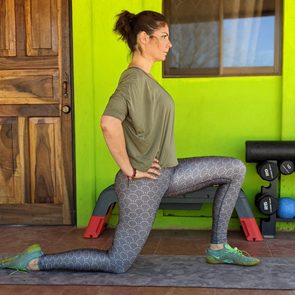Abduction vs. Adduction: You’ll Get a Better Workout If You Know the Difference
Updated: Mar. 16, 2022
Knowing the difference between abduction vs. adduction exercises can help you work out smarter and better protect your joints from injury.
Abduction vs. adduction: What’s the difference?
Here’s the thing about abduction and adduction: Even if you don’t directly know the terms, in all likelihood, you’re familiar with what they are.
Now, imagine doing a snow angel for a minute—you start with your legs together and your arms at your sides, then you sweep your arms up and out, away from your body, as you simultaneously spread your legs. This is the perfect picture of abduction—moving your limbs away from your body’s midline.
(By the way, abduction is key to these butt workouts.)
Then, as you draw your arms back to your sides and your legs back together, you’re performing adductions—drawing your limbs closer to your midline.
Abduction and adduction, like flexion, extension, or rotation, are simply ways that your body can move; abduction is moving a limb away from the midline of your body, while adduction is moving a limb closer to the midline of your body. And just as flexion and extension are important to everyday life, so are adduction and abduction.
Of course, these terms can be confusing—which one has the extra “d” and which one has the “b”? There are a couple of fun ways to help yourself remember.
“I’ve always remembered abduction as if you were being abducted by aliens—your arms would lift away from your body!” says James de Lacey, MSc, a professional strength and conditioning coach for the international Rugby Union and Rugby League and an exercise and sport science published researcher.
And for adduction? Well, when you take something away, you have to “add” it back in. So when you take your arms away from your body, you need adduction to add them back.
So, in order to maximize your workout routine, develop well-balanced musculature, and reduce your risk of injury, here’s everything you need to know about abduction and adduction.
(Beware of the everyday moves that hurt your body.)
Why are these movements important?
“Abduction and adduction exercises, known as the frontal plane or mediolateral or just lateral-based exercises, are performed in a regular workout routine to provide a balanced approach that can reduce the risk of injury during regular activity,” de Lacey says.
(These workout moves can lead to an exercise injury.)
And the reality is, you perform lateral movements every single day. You might wave your arm to flag down a cab, or you might have to side-step around a pothole when walking down the street. These movements, although reasonably simple in nature, require your muscles and joints to move seamlessly through a range of motion that’s toward and away from your midline.
And for athletes? The need is even more pronounced.
Just think about how often basketball players have to move quickly from one side to the other, or throw up an arm to reach out and catch a pass. Even trail runners need to be constantly prepared to step laterally over a root or a rock when navigating tricky trails.
“I have my professional athletes perform frontal plane exercises every week for this exact reason, as they have to be able to change direction or sidestep quickly,” de Lacey says.
Abduction exercises and upper body
When it comes to abduction exercises, de Lacey says although the upper body can certainly develop muscle imbalances and injuries that limit abduction of the shoulder, generally speaking, it’s more important to train abduction exercises for your lower body.
“For the lower body, it becomes more important as you need to develop the ability to produce force safely and effectively from side-to-side instead of just up and down or front and back,” explains de Lacey.
When you go for a walk or jog, or you hop on your bike to take a ride, you’re engaging in flexion and extension. All of these movements take place in the “forward/backward” plane of motion—the sagittal plane.
If you fail to work the muscles that are designed to assist with these lateral movements, when life requires that you change direction quickly, your muscles may not be prepared to respond. And as a result, you could end up injured.
“Most non-contact [anterior cruciate ligament] ACL injuries occur during a side-stepping motion,” points out de Lacey. “Not training in the frontal plane (performing abduction) can increase your risk of injury when moving outside of the up and down, front and back movement.”
Adduction exercises and lower body
Now, when performing adduction or frontal plane exercises, de Lacey says the lower body is more important and trickier because it’s often more neglected.
“These are often neglected for the same reasons as abduction exercises—the exercises that target the abductors and adductors aren’t as ‘traditional’ as squats or deadlifts, you can’t use as much weight, and they’re more difficult for people newer to exercise to perform.”
For the upper body, the muscle group that does the most adduction of the arms is the latissimus dorsi. Just think about the action of a pull-up for a minute—an exercise that targets the lats.
If your arms start over your head as you hang from a pull-up bar (in a fully abducted position), as you pull yourself up toward the bar, your lats engage to perform the motion, and your elbows are drawn back toward your sides, adducting as you do your pull-up. That means that if you regularly include pull-ups or other overhead pulling exercises into your routine, then congratulations, you’re already training adduction for your upper body.
For the average person, this may not pose major problems most of the time. But if you engage in sports or activities where you need to sprint or kick a ball, de Lacey says groin injuries are more likely to pop up.
(To help prevent injury, add these groin stretches to your stretching routine.)
How to train your upper body for abduction and adduction
There are easy ways to make sure you’re training abduction and adduction for your upper body.
You don’t need to overdo these movements, simply include them as a part of your normal workout routine.
In fact, you may already be doing them on a regular basis—it’s easy to incorporate them at home with basic equipment.
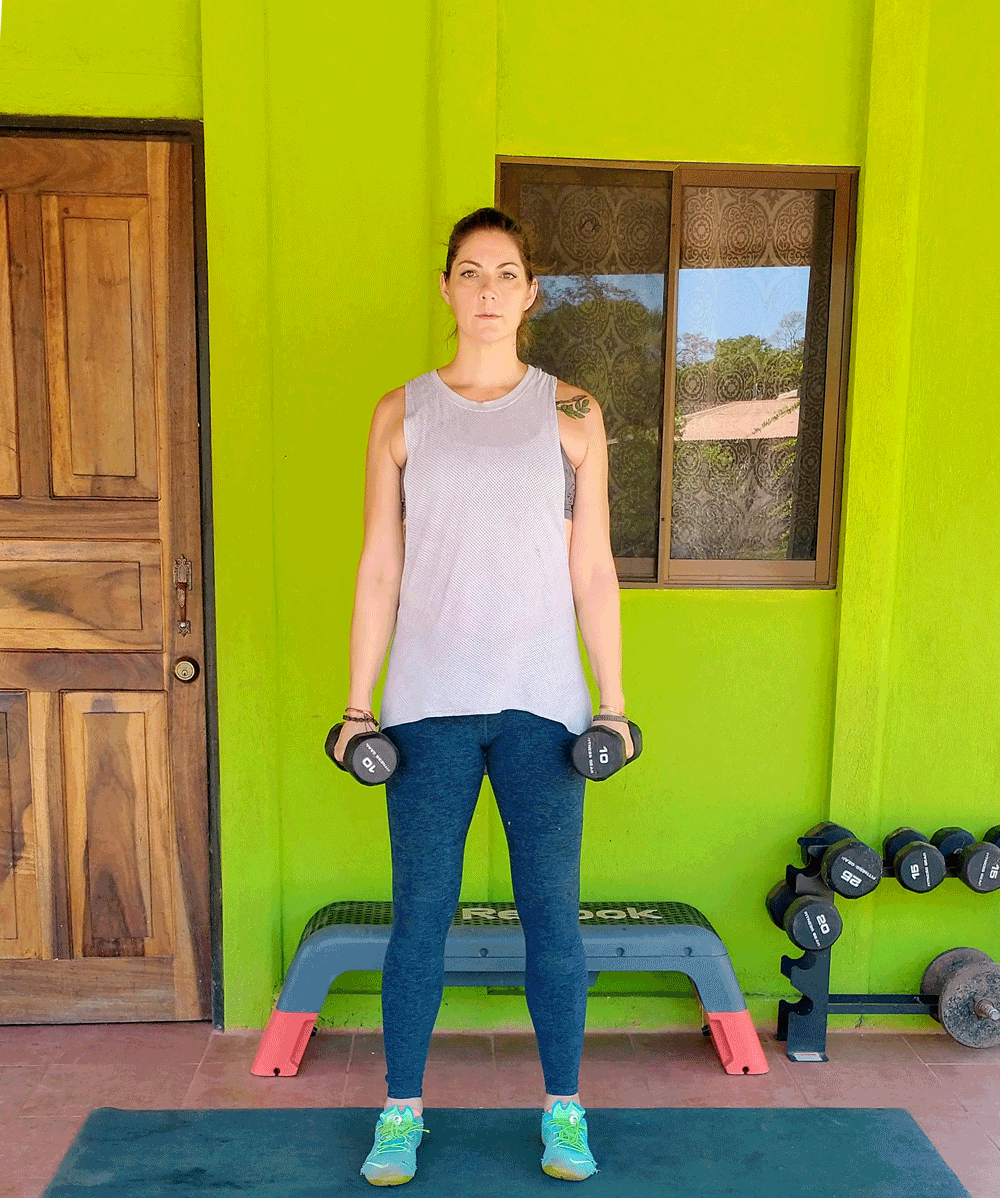
Shoulder abduction: Lateral dumbbell raises
Stand tall with your feet hip-distance apart, your arms at your sides, a dumbbell in each hand with your palms facing your body. Engage your core and check your posture as you take a breath in.
When you exhale, use your shoulders to raise your arms straight out to the side, fully extended, until you’re forming a “T” with your torso and arms.
Slowly lower the dumbbells back to your sides. Perform two to three sets of 10 to 12 repetitions.
(Add this well-balanced shoulder workout to your routine.)
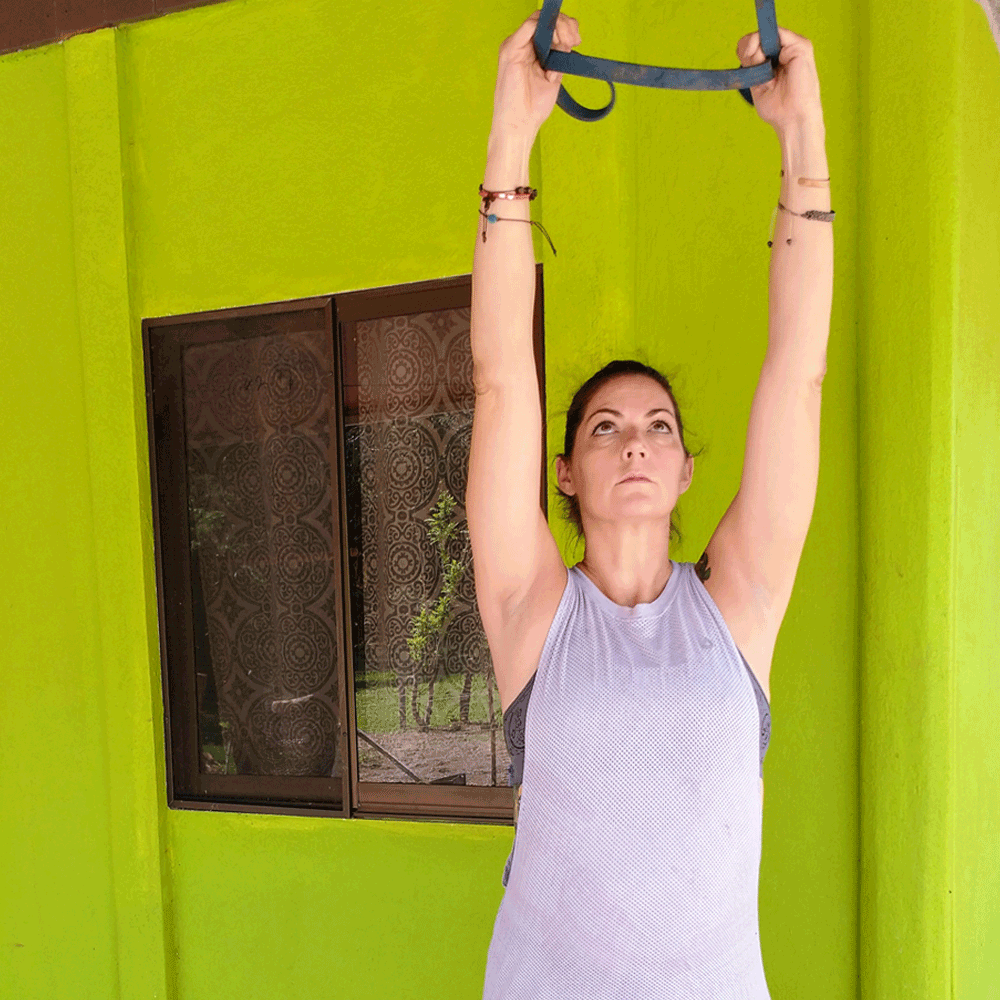
Shoulder adduction: banded lat pull-down
You may not be ready for full pull-ups yet, but a lat pull-down targets the latissimus dorsi, effectively training your major upper-body adductors.
Attach a heavy resistance band to a sturdy overhead attachment point. If you have a pullup bar, you can use the bar itself as your attachment point. Reach your hands overhead so they’re fully extended upward from your shoulders. You can perform this exercise from a seated position if you don’t have enough room to extend your arms overhead while standing.
Grasp the resistance band with both hands, your palms facing forward. Take a breath in, engage your core, and check your posture. As you exhale, engage your mid and upper back to pull your hands down toward your shoulders, as you pull your shoulder blades in toward your spine.
Your elbows should be pulled into your sides when your hands are just outside your shoulders. Reverse the movement and slowly extend your arms overhead. Complete three sets of 10 to 15 repetitions.
How to train your lower body for abduction and adduction
It’s important to be more intentional about including abduction and adduction exercises into your regular workout routine. These exercises can help protect your joints and lower body from injury, and can also help prevent falls.
In fact, according to a 2019 study published in PLOS One, strength declines in abductors and adductors in the elderly are significantly more pronounced than declines in flexion and extension, which could contribute to falls resulting in significant injury.
Training for abduction and adduction, particularly as you age, could help prevent these life-altering falls. Consider the following exercises you can complete with little or no equipment.

Hip abduction: Banded lateral walks
Use a small, looped resistance band or tie a longer band into a smaller loop. Place the loop around your legs, either just above the ankles or just above the knees. The higher the placement, the more challenging the exercise.
Stand with your feet roughly hip-distance apart so the band is taut, but not tight.
Check your posture—your abs should be engaged and your shoulders back. Bend your knees slightly and press your hips back slightly so you’re in an athletic stance, your weight evenly distributed across your feet. From here, take a step laterally with your right foot as far to the right as you comfortably can.
Follow it with your left foot. Take 10 to 12 steps to the right, then reverse the movement and take 10 to 12 steps to the left. Complete three to five sets.
(Try monster walks as another way to hit your abductors.)
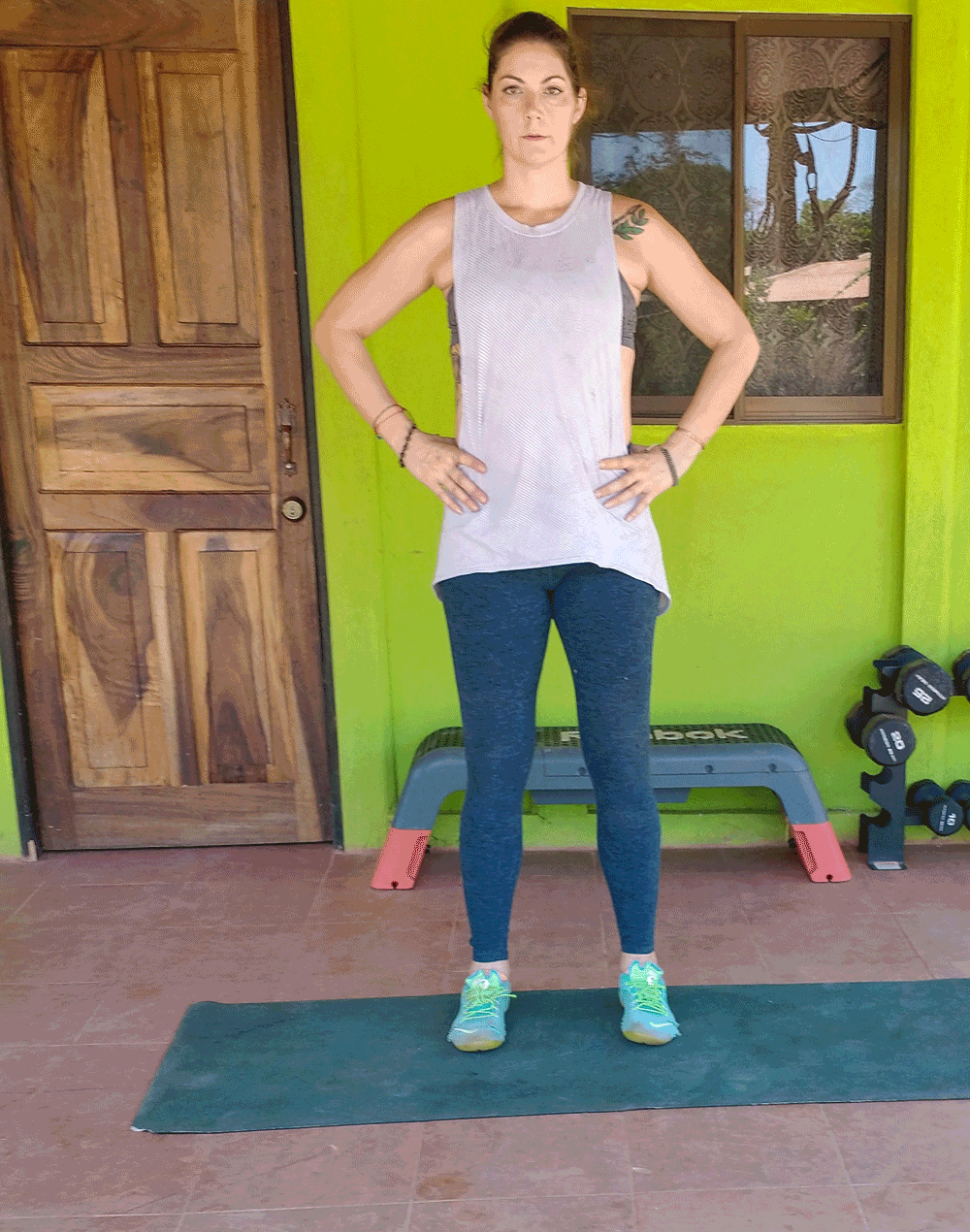
Hip abduction and adduction: 5-point lunge
When performing a 5-point lunge, you’re essentially performing your standard forward and backward lunges, but you’re adding three other variations—a forward-angled lunge, a side lunge, and a curtsy lunge—to hit your gluteus medius and your adductor magnus more effectively.
Start standing tall, your feet hip-distance apart, your core engaged. Step forward with your right foot and perform a forward lunge, keeping your torso balanced between your front and back feet as you lower your left knee toward the floor, your torso upright and tall. Return to the starting position
Perform the second lunge by stepping your right foot forward and outward at a 45-degree angle. Complete the lunge as you normally would, making sure your right knee is tracking with your toes to help protect your knees. Return to the starting position.
Perform the third lunge by stepping your right leg directly out to the side, laterally. You’ll keep your left leg straight as you press your hips back and bend your right knee to perform a lateral lunge. Again, make sure your right knee tracks with your right toes to protect your knees. Return to the starting position.
Perform the fourth lunge by stepping your right leg directly backward, performing a backward lunge. Remember to keep your torso upright and tall as you perform this lunge — you might be more inclined to tip your torso forward. Return to the starting position.
The fifth and final lunge is a curtsy lunge, where you step your right foot backward and behind/across your midline so that it crosses behind your left leg. Pay attention to your torso and your left knee as you perform the curtsy lunge—your torso should remain upright, and your left knee should track with your left toes as you lower yourself into the lunge. Return to the starting position.
Complete six to eight repetitions per leg and two to three sets total.
(Give this complete lower-body workout a try.)
How to add abduction and adduction to your cardio
Cardio doesn’t always have to be done in the sagittal plane. By adding a few of these moves to your workout, you can train for endurance in the frontal plane as well.
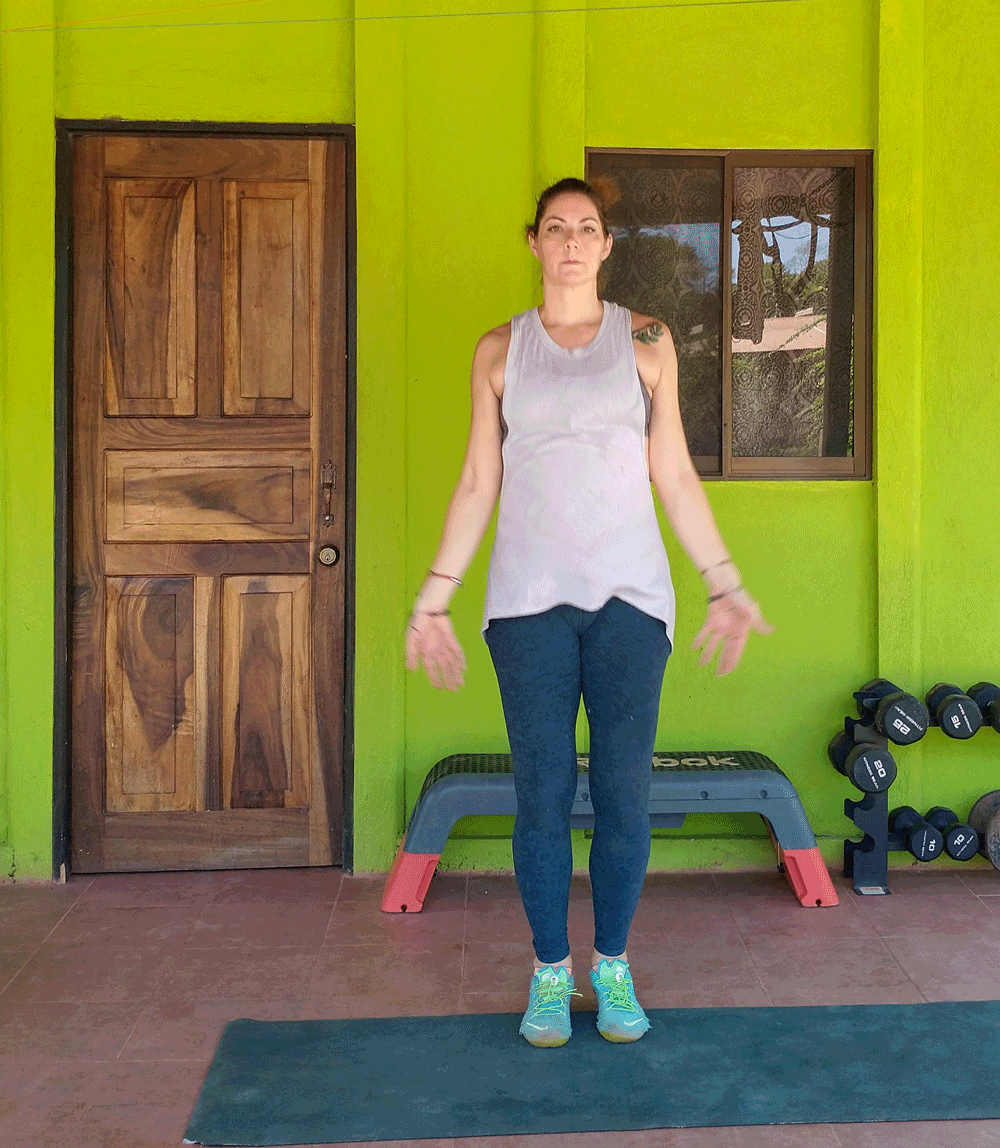
Jumping jacks
Add jumping jacks to a high-intensity interval training (HIIT) routine. Adding the movement in increments of 30 to 60 seconds with short periods of rest between intervals makes for an excellent form of cardio you can easily do at home.
Stand tall, your feet together, your core engaged, your arms at your sides. In a single movement, jump into the air and spread your legs wide as you simultaneously sweep your arms out and over your head. Land lightly on the balls of your feet, and immediately jump back into the air, this time pulling your arms and legs back to your sides.
Continue as fast as you can for the duration of your interval.
(Add other home-based cardio routines to your schedule.)
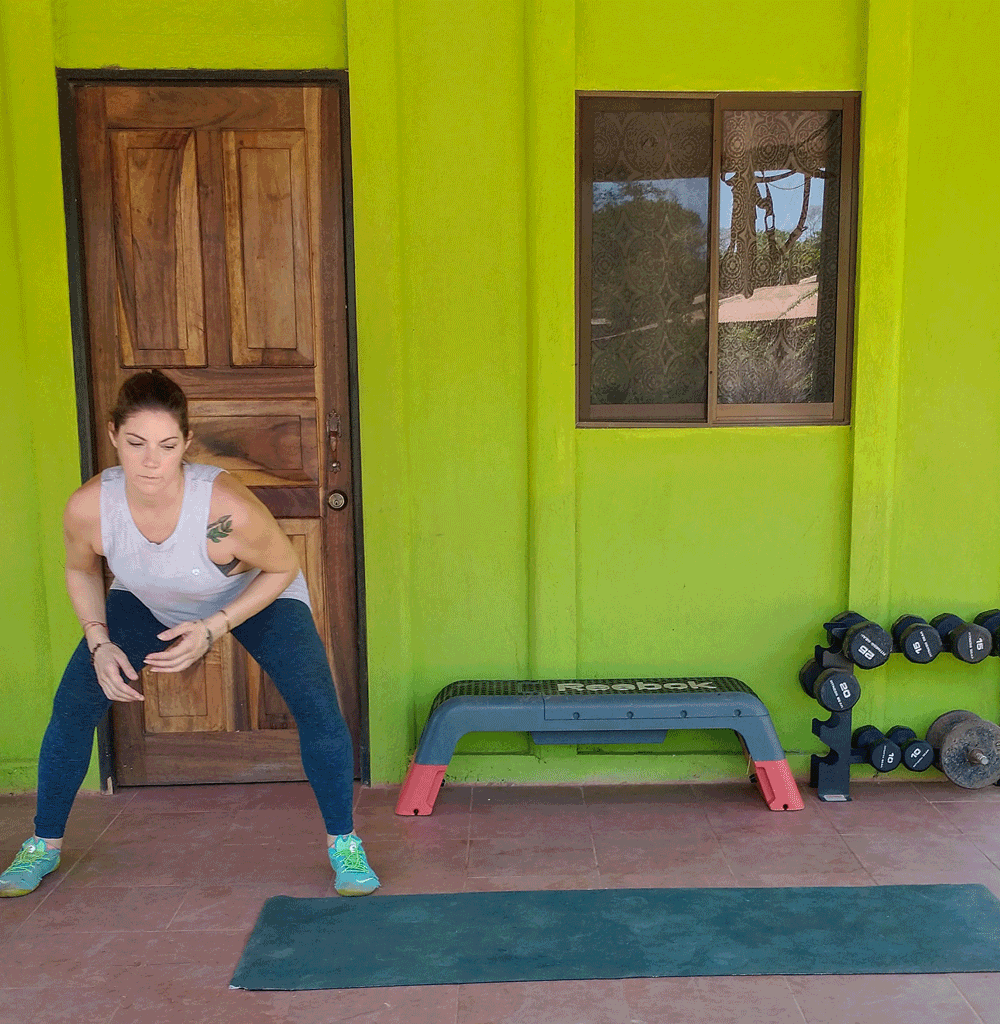
Side shuffles
Mark out an area of 10 to 15 feet. Stand in the center of the space in an athletic stance, your knees and hips slightly bent, your weight in the balls of your feet, your torso leaning slightly forward, your core engaged.
When your interval starts, step laterally to the left with your left foot, following immediately with your right foot. Take another step with your left foot, and continue this side shuffle until you’re at the left side of your space.
Plant your left foot and press off of it, reversing the movement and side shuffling to the right until you hit the right side of your space. Move as quickly as you can without crossing your legs over each other. Continue for the duration of your interval.
This makes for an excellent “Tabata-style” interval routine, where you side shuffle for 20 seconds followed by a 10-second rest, completing a total of eight rounds of work and rest.
Next, here’s an at-home HIIT workout you should try today.















